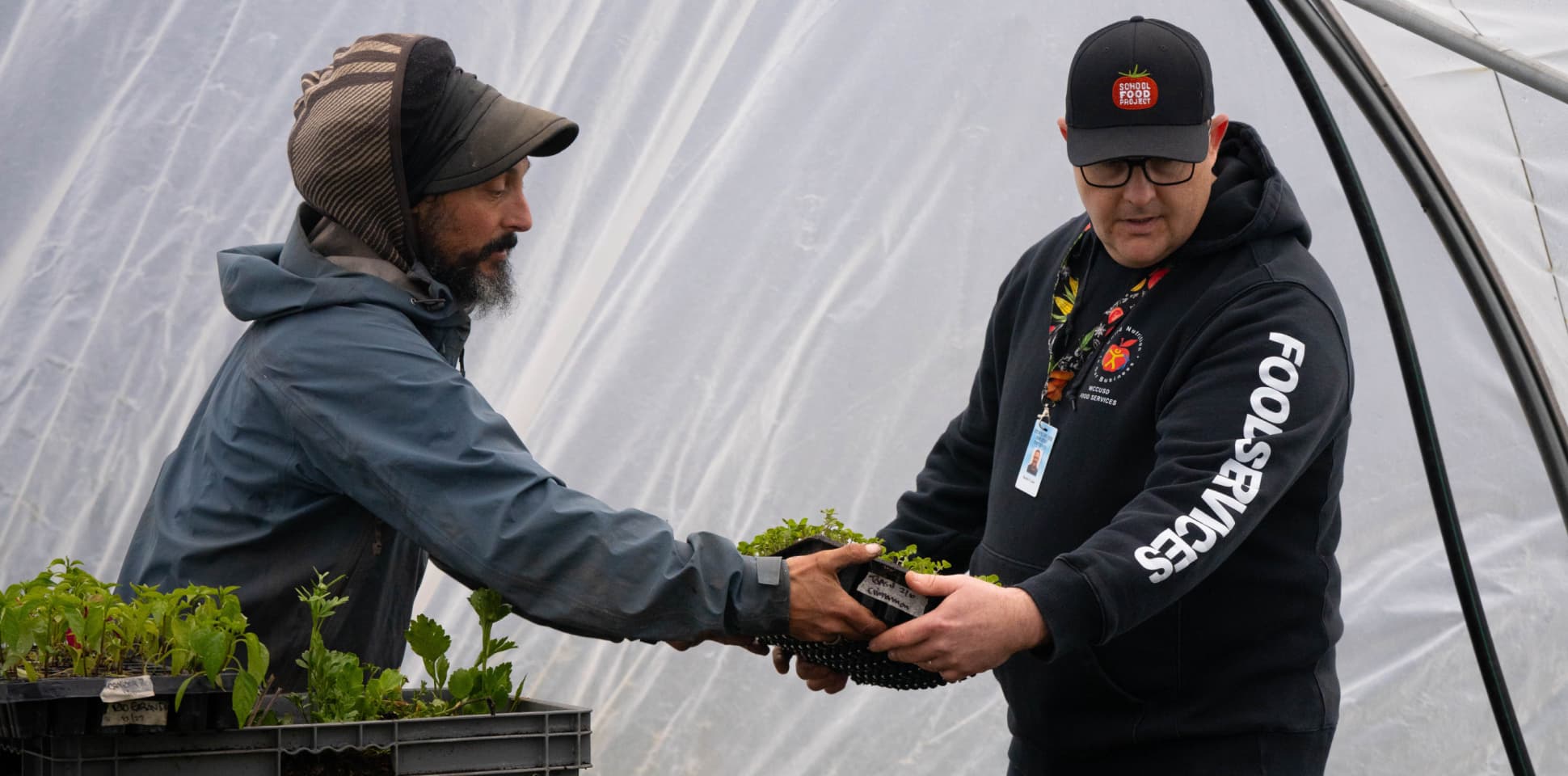California schools are one of the largest food providers in the U.S., serving 3 million lunches and 1.5 million breakfasts every school day. It’s a gargantuan undertaking, and one that has the potential to have a huge impact on the environment. From the types of food prepared to where ingredients are sourced and how food waste is handled, School Food Professionals have the opportunity to reduce the carbon footprint of their food programs.
Fortunately, California leads the way in charting a more sustainable path for school food. Below, you’ll find a sampling of some of the innovative approaches that School Food Professionals across the state are taking to create a healthier future for their students and the planet.
Taking a Plant-Forward Approach
Of all food production, meat and dairy are by far the largest producers of greenhouse gas emissions. Increasing the number of plant-based and plant-forward meals served in schools can go a long way toward cutting down the impact school meals have on our climate while making our students healthier in the process. More than half of the middle and high schools in California’s 25 largest districts offer at least one plant-based entree every day. Hundreds of California school districts offer salad bars to their students, which not only increase lunch participation and fruit and vegetable consumption, but also cut down on food waste by letting kids pick the foods they want to eat.
Buying Fresh and Local
The easiest way to cut down on the carbon footprint of food is to reduce the number of miles it has to travel from farm to tray. Food transportation is responsible for more than a third of the greenhouse gas emissions involved in fruit and vegetable production. Sourcing ingredients from local producers through farm to school programs eliminates this pollution while ensuring kids get to eat the freshest and healthiest possible meals.
Cutting Down on Waste
Food waste is the most common single item in U.S. landfills, and it is a major contributor to climate change. California school districts are tackling this challenge head on, introducing a wide range of novel strategies and approaches that are successfully reducing the food waste they produce. Tactics like serving sliced (rather than whole) fruits and vegetables, scheduling recess before lunch, and increasing the length of mealtimes have all been proven to cut down on the amount of food that is wasted. Creating share tables where students can return unconsumed food and beverage items and introducing composting programs ensures that items that would otherwise have been thrown away can be put to good use.
Partnering With Students
Students aren’t just the main consumers of school food. They’re also important allies in creating sustainable school food programs. Many school food programs solicit students’ input on menu choices, enabling schools to develop recipes using the flavors they love, so food ends up in kids’ stomachs, rather than the trash. By educating students on their impact on the environment, schools are also enlisting them in the fight against food waste. The World Wildlife Fund’s Food Waste Warriors toolkit has a wealth of grade-level-appropriate lessons and activities on the impact of food, paper and plastic waste and what students can do to fight it.
Climate change impacts everyone. By instituting sustainable programs, California’s school districts and School Food Professionals are creating a greener future and making sure all our kids have a healthy world to grow up in.

